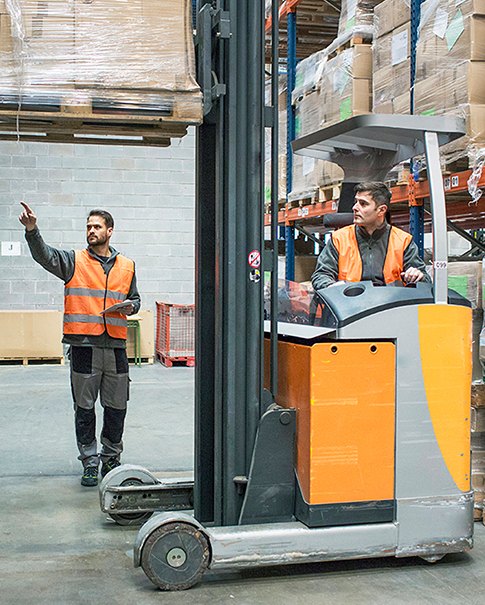Here are more details about the forklift attachment bale clamp:
1. Structure and Design
- Jaws: The bale clamp typically has two jaws that are designed to grip the soft pack firmly. These jaws are often lined with materials such as rubber or textured surfaces to increase friction and prevent the bales from slipping during handling. The shape of the jaws can vary depending on the type of soft materials being handled. For example, for handling cotton bales, the jaws may have a wider and flatter surface to distribute the pressure evenly across the bale.
- Hydraulic System: It is powered by a hydraulic system that allows for precise control of the clamping force. The operator can adjust the pressure applied by the jaws according to the density and size of the bale. This ensures that the bale is held securely without being damaged.
- Mounting Mechanism: The bale clamp is designed to be easily attached to the forklift. It usually has a standard mounting interface that can be quickly connected to the forklift's carriage or forks, enabling quick and convenient installation and removal.
2. Operating Principles
- Clamping Operation: When the operator activates the hydraulic system, the jaws of the bale clamp move towards each other, gripping the bale. The hydraulic pressure can be adjusted to ensure a firm hold. Once the bale is securely clamped, the forklift can lift and move the bale to the desired location.
- Release Operation: To release the bale, the operator simply reverses the hydraulic flow, causing the jaws to open and release the bale. This process is smooth and can be done quickly, increasing the efficiency of material handling operations.
3. Advantages
- Increased Efficiency: In industries such as waste paper recycling or textile manufacturing, where large quantities of soft materials need to be moved, the bale clamp allows for faster handling compared to traditional methods. Since it can grip the bales directly without the need for pallets, it reduces the time and effort required for loading and unloading.
- Damage Prevention: The adjustable clamping force and the design of the jaws help prevent damage to the soft materials. For example, when handling delicate wool bales, the bale clamp can be adjusted to apply just the right amount of pressure to hold the bale without crushing or tearing the fibers.
- Versatility: As mentioned earlier, it can handle a wide range of soft materials, making it a valuable attachment in multiple industries. It can adapt to different bale sizes and shapes, providing flexibility in material handling operations.
4. Applications
- Paper Making Industry: In paper mills, the bale clamp is used to handle pulp bales and waste paper bales. It helps in transporting these materials from storage areas to processing machines, streamlining the production process.
- Textile Industry: For handling cotton bales, wool bales, and other textile raw materials. It is essential for moving these materials within the factory, from the receiving area to the processing and storage locations.
- Waste Management: In waste paper recycling facilities, the bale clamp is used to handle large bales of recycled paper. It can also be used in other waste management applications where soft waste materials are baled for easier handling and transportation.
5. Safety Considerations
- Operator Training: Operators need to be trained on how to use the bale clamp properly. They should understand how to adjust the clamping force, how to position the bale correctly, and how to operate the forklift with the attachment safely.
- Regular Maintenance: The hydraulic system and the mechanical components of the bale clamp need to be regularly inspected and maintained to ensure they are in good working condition. This helps prevent malfunctions that could lead to accidents or damage to the materials being handled.
